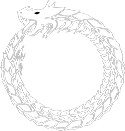My friend, colleague, and long-time co-conspirator Ralph Mroz has started a new blog at https://thestreetstandards.wordpress.com. Ralph is very much worth reading if you’re interested in firearms/tactical training, responsible firearms usage as a civilian or armed professional, dogs, vegetarian recipes, Libertarian political commentary, philosophy, guns, (did I already say dogs?), humor, good deeds and Socratic questioning.
Ralph spent a full career in the high-tech business world before he decided to go into law enforcement. He retired a few years back. He’s the author of some of the best (and most overlooked by the new generation of firearms instructors) books on reality based training: http://www.amazon.com/Ralph-Mroz/e/B001K88VQQ
His recent post here: https://thestreetstandards.wordpress.com/2015/06/23/reholster-slower-with-apoligies-to-bruce-gray/ got me to thinking about the issue of safety, training, and how an instructor evaluates students in an open-enrollment class.
Caveat here before the Errornet PoPo start frothing – I’m not a firearms instructor. Nor does my company do firearms training. We do, on occasion, design firearms training to enhance neurological and cognitive improvements for firearms use under stress. That being said, I WAS a firearms instructor for a very long time, and managed to stumble through a few firearms classes myself as a student and as an instructor.
Some of the hats I’ve worn — though I gave away most of the really good ones.
Here’s a neural-based training tip for instructors, one that’s useful for very quickly assessing the skill level of an entire class of 20-25 students in a safe, non-firing, and effective fashion.
In about 2-3 minutes, though for advanced classes I like to take 5 minutes.
Here’s my presuppositions for this tip:
*The instructor is qualified to teach the class.
*The students are required to show up with holster, weapon, mags, etc.
*This is a basic level class (open enrollment, like the kind advertised ad nauseum as Tactical Ninja Pistal 101, Basic Combat/Tacti-Cool Pistol Level 1, etc. etc.)
*There there is an obligatory safety brief at the beginning and administrative introduction to the class.
THEN (not later, early as you can in the class, I prefer to do it immediately)
*Ensure that ALL weapons in the class are unloaded and ALL magazines are empty. At this point, this should be accomplished by visual and physical inspection (and physical pat-down search) by the instructor and assistants.
*Have EVERY STUDENT gear up with their range equipment (belt, holster, weapon, reloads/spare mags).
*INSTRUCTORS: JUST WATCH! LET THEM GET THEIR GEAR ON AND WATCH WHAT AND HOW THEY DO IT.
*Then, WITHOUT ANY INSTRUCTION OR INTERFERENCE (you DID ascertain that ALL weapons present are SAFE, yes?) have the ENTIRE STUDENT BODY get up and “shadow box” with their pistols. What does “shadow box” mean in this context? That means have them move around the room, around one another, and draw, reholster, acquire a target, acquire multiple targets, walk towards a target, get off the X…
WITHOUT ANY INSTRUCTION OR EXPLANATION WHATSOEVER FROM THE INSTRUCTORS. (which, by the way, is very difficult for traditional instructors to do).
*And instructors, just watch. Don’t say a word other than to command them to do the various tasks. And wring it out: draw, reholster, high ready, low ready, prone, kneeling, whatever.
*WITHOUT ANY INSTRUCTION OR EXPLANATION WHATSOEVER.
Any EXPERIENCED, COMPETENT instructor will be able to, after 2-5 minutes of this drill, identify the skill level of every student in the class.
If that instructor cannot calibrate skill level by observing the students in a dry-fire controlled safe environment, that instructor is not qualified to teach that class.
Why? In that context of “novelty” (quotes for the neuroscience crowd who understand the importance of novelty in involving cognition and promoting new neurological growth) the students will be under significant self-inflicted stress. An EXPERIENCED COMPETENT instructor will be able to immediately recognize who is a true beginner, who thinks they know something, who actually does, who’s actually been in a gunfight (or fight of some kind), and who will be a major ego/pain in the ass. The instructor will see if they muzzle themselves or others, if they have any experience actually drawing the weapon and reholstering, if they know how to move, etc. etc.
So what does this do?
It makes your live fire a hell of a lot more safer. Instead of waiting to see who’s gonna fuck up and shoot their junk off (or yours) you can identify problems in a safe, controlled environment. Might somebody muzzle somebody else with a “safe” weapon? Yep, could happen. Did you (the instructor) ensure that the environment is safe? Yeah, it breaks the “rules” — and someone much smarter and more experienced than me told me something a long, long time ago — “Dude, there are no rules in a gunfight. Cheat, cheat, break the rules…and live.”
Don’t take my word for it. Go out and try it yourself. You will find (not may, will) that this exercise dramatically reduces the time spent trying to identify problem students in a live fire environment, and helps an instructor manage his safety management time more efficiently, so that he or she can focus on quality instruction time.
Just my two cents worth — I’ve demonstrated this to high end military units as well as progressive law enforcement agencies, and once the instructors get past their own brain lock on “how things are SUPPOSED to be done” they find it really saves time, and makes the live fire much safer.
Jus’ saying…my two cents worth. As always, anything I say should be rigorously examined and tested against your own experience. Everything I say here I’ve tested personally in training and, where applicable, operationally.
Highly recommended tactical/shooting/tacti-cool lifestyle blogs:
Ralph Mroz: https://thestreetstandards.wordpress.com
Claude Werner: https://tacticalprofessor.wordpress.com
Greg Ellifritz: http://www.activeresponsetraining.net
Dennis Martin: http://www.cqbservices.com


